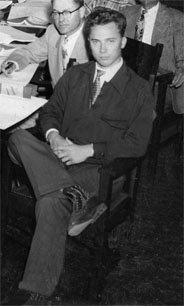Wilmer Geoffroy was for many years the photographer for the Vermilion Parish
School Board. He was instrumental in the publication of Volume 1 of the
History of Vermilion Parish,. He was the one who copied all of the
submitted photographs, resized them, and developed them in the darkroom.
In those pre-computer days, books had to be laid out physically.
After Wilmer's death, his sister Marianne Geoffroy Thibodeaux contributed to the
Vermilion Historical Society a collection of the photographs that Wilmer had
accumulated during his lifetime. Some of these photographs were already available
to the Society from other sources, but some of them are one-of-a-kind
photographs that we would not have obtained but for the generosity of Marianne Geoffroy.
Click on the thumbnail images below to see a larger image.
 |
Veranda Hotel. This is a
picture of the Veranda Hotel, which stood on the corner of State and Concord
Streets for about 70 years until it was demolished to make room for the
Audrey Hotel. The building was begun about 1845 by Père Mégret himself
as a courthouse building. He stopped working on it when the parish
seat was moved back to Perry's Bridge in 1848. The parish
seat was moved back to Abbeville in 1854, four months after Mégret's death
(December 1853). The police jury bought the property at Mégret's succession
sale, but then decided that instead of finishing that building, they would
build a wooden courthouse directly on the courthouse square. In 1857 the police
jury sold this property with the unfinished building to Joseph Gallet, who completed the building and
opened it as the Veranda Hotel.
|
 |
Veranda Hotel. Here is
another photograph of the Veranda Hotel. |
 |
Audrey Hotel postcard.
The Audrey Hotel was built in 1928 on the spot where the Veranda Hotel
formerly stood. The Veranda Hotel had served Abbeville for 70 years
when it was demolished to make way for the new Audrey Hotel. The
picture appears to have been taken in the 1940s. |
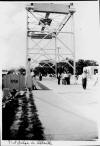 |
New bridge for Abbeville.
This picture was taken on November 27, 1938, opening day for the new bridge
across the Vermilion River at Abbeville. There was only one bridge
across the river at that time—on Port Street (now called Père Mégret). This bridge replaced the
bridge built in 1896. The handwritten
notation on the picture to the effect that this was the first bridge in
Abbeville is far from correct. There were several wooden bridges at
this point even before the 1896 bridge, most of which did not last very long before
requiring replacement. |
 |
Colomb's Bakery postcard. It is
not known exactly when this building was built. It sat on the
corner of St. Victor and Washington Streets until it was demolished
probably in the 1960s. A baker named Jean Boyancé operated this bakery
from before the Civil War until his death in 1894. The bakery was then
acquired by Jean Marie Colomb, and at that time the building was said to be
the oldest in Abbeville. After Mr. Colomb died in 1913, the bakery was
run by his wife, Agatha, and his son, Antoine. Many people still
remember the exquisite French bread produced by this bakery. |
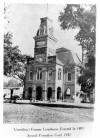 |
The 1891 Courthouse. This
is one of the few pictures that shows the lion's head on the front wall of
the courthouse. The previous courthouse, a wooden structure, burned to
the ground on the night of April 7, 1885, destroying many of the courthouse
records. The police jury temporarily established the courthouse offices
in a building
built by the Masons on the site of the present Masonic Temple until the 1891
courthouse was completed. This courthouse was designed by John J. Hannan and his
partner Mr. Pulford, and was constructed by C. D. Stewart and Douglas
Southwell of New Iberia. It was demolished to make way
for our present courthouse, which was completed in 1953. |
 |
1891 Courthouse postcard.
This postcard shows another view of the 1891 courthouse. |
 |
First National Bank. An
unobstructed view of the First National Bank in its second location (Charity
Street). The first location of this bank was on the corner of State
and Peace Streets, in the building that now serves as the Sheriff's office.
This bank was later bought out by Hibernia Bank, which then moved to Highway
14 Bypass. |
 |
Gray Friars. The home of
Judge Wakeman W. Edwards on North State Street known as "Gray Friars" was completed in 1889.
This is the only picture we have of Gray Friars showing the picket fence
that was put up before 1908. Judge Edwards lived here
until his death in 1921. His wife, Martha Hollingsworth, died in 1908.
His son, Clarence J. Edwards, a doctor and editor of the Meridional, preceded him in death
in 1920. His daughter,
Elizabeth ("Lizzie") Edwards, married photographer George B. Petty and moved
to Chicago. His other son, William P. Edwards, married Ruth Chadwick,
and served many years as a judge in Vermilion Parish. |
 |
Louisiana State Rice Mill postcard.
An interesting view of the Louisiana State Rice Mill, originally the
Planters' Rice Mill. The architect was George Honold, "Abbeville's
stellar architect." This was the second rice mill built on the
property of Kate Area Godchaux. The first was the Abbeville Rice Mill
on the Vermilion River, west of this rice mill. Eventually the
ownership of both was consolidated and they became part of Louisiana State
Rice Milling Compay (Lastarmco) under the leadership of Frank A. Godchaux. |
 |
Louisiana State Rice Mill postcard.
Another view of the second rice mill on the Godchaux property. |
 |
Légé Hotel. The Légé
Hotel, also known as Hotel Vermilion, stood on the corner of Main and Port
(now called Père Mégret) Streets from 1905 to 1910. It was built by J.
O. Légé in 1905, and was destroyed by fire in 1910. It was not
rebuilt as a hotel. This is the corner where Marion Guarino later had
a service station and auto repair shop. You can see a portion of the 1896 bridge over the
Vermilion River on the right edge of the picture. |
 |
Solomon Wise building.
This picture shows three men standing in front of the Solomon Wise building.
One of the three men is probably Eli Wise. If
you look carefully at the right edge of this picture and the left edge of
the Légé Hotel picture above, you will see that they were taken one after
another from almost the same vantage point. That means that this
picture of the Solomon Wise building was taken between 1905 and 1910.
The building was completed in 1894. In more recent times, this
building housed Landry Stores, then Black's Oyster Restaurant. |
 |
Methodist Church postcard. When
this picture was taken the Methodist Church was on the corner of State and
St. Victor Streets, where Edward Jones now does business. In fact,
part of this church is still contained in the Edward Jones building.
The new Methodist Church was built on the same block but on the corner of
State and Vermilion Streets. The steeple and roof were removed from
the old church and the building remodeled. It has since been enlarged. |
 |
Mount Carmel postcard.
Father Méhault brought the Carmelite nuns to Abbeville in 1884 and built a
convent in 1885 from the lumber of the old Catholic church that had just
been demolished. It was at first a girls' school, with some boarding,
but a boys' school was soon added. |
 |
Abbeville Power Plant postcard.
This postcard shows Abbeville's second power plant, just south of Steen's
Syrup Mill. The first power plant was installed in 1902 near the
railroad tracks on State Street. The second power plant was built in
1922. |
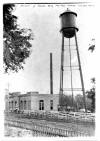 |
Abbeville Power Plant.
This picture of the Abbeville Power Plant was apparently taken just after the erection of the water tower. |
 |
St. Mary Magdalen Catholic Church.
This is a picture of the Catholic church completed in 1884 under the
direction of Father Méhault. It sat much closer to Main
Street than the present church. This church stood
until 1907, when it was destroyed by fire. A temporary church, St.
Anne's, was built by Father Laforest on the corner of Main and Vermilion
Streets, and served until the structure of the present church was completed
in 1911. |
 |
Interior of St. Anne's Church.
Although someone has written on this picture, "Interior of St. Mary Catholic
Church - Abbeville about 1899," the truth is that this picture shows the
interior of the temporary St. Anne's church about 1910. We have
pictures of the interior of St. Mary Magdalen about 1899 or 1900 and this is
not it. Nevertheless, we are happy to have this picture because we
have no other picture of the interior of St. Anne's. |
 |
Vermilion Parish School Board
Curriculum Center. No doubt this picture of the Vermilion Parish
School Board Curriculum Center is included in Mr. Geoffroy's collection
because this is where he worked for many years. |
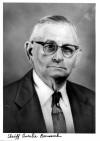 |
Sheriff Aurelie Broussard.
This man served as Sheriff of Vermilion Parish from 1944 to 1952. |
 |
Clerk of Court Polycarpe Broussard.
He served as Vermilion Parish Clerk of Court from 1920 to 1952. |
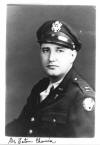 |
Dr. Louis Eaton Chauvin.
Dr. Chauvin was the son of Thomas Goode Chauvin and Marie Louise Larrey.
Thomas ran a general merchandise store in the building now owned by the
Abbey Players. They lived in the two-story house west of that property,
that had been built by Joseph T. Labit. Dr. Chauvin set up his
doctor's office just south of the home. He interrupted his local
practice of medicine to serve in World War II, where he had abundant
opportunity to perfect his surgical talents. He returned to his local
practice after the war, and later built a home where the Old Kaplan Highway
meets Highway 14 (later owned by Benny Bohrer). He eventually retired
to New Orleans. |
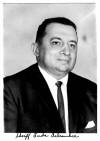 |
Sheriff Euda Delcambre. Euda Delcambre served as Vermilion Parish Sheriff from 1964 to 1984.
He lived in Delcambre, and many people said that he lived on the Iberia Parish
side of the line. Euda claimed that the boundary went through
his home, and that his bedroom was in Vermilion Parish. His opponents
never succeeded in having him disqualified. |
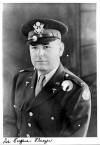 |
Dr. Eugene L. Eleazar, Sr.
Dr. Eleazar followed in his father's footsteps and practiced dentistry in
Abbeville. His father, Dr. Leon Joseph Eleazar, Sr., practiced
dentistry in Abbeville from 1917 until his death in 1972. The younger Dr. Eleazar
interrupted his practice to serve in the Army Air Force in World War II.
He died February 22, 1980. |
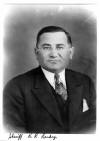 |
Sheriff K. P. Landry. K.
P. Landry served as Sheriff of Vermilion Parish from 1940 to 1944. |
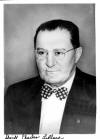 |
Sheriff Charles LeBlanc.
Charles LeBlanc served as Vermilion Parish Sheriff from 1931 to 1932,
filling the unexpired term of Claude Broussard, who died in office. |
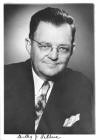 |
Sen. Dudley J. LeBlanc.
The Hadacol king, Dudley J. LeBlanc, was a popular tonic manufacturer,
salesman, radio personality, and politician. He became famous by
taking groups of young ladies dressed in Evangeline costumes to Nova Scotia,
and by touring the country with "caravans" of big-name celebrities to promote his product, Hadacol. He had a weekly radio program
during which he spoke only Cajun French. As a state senator, he
created the Louisiana Old Age Pension. He also wrote a book on the
history of the Acadian people. He died in 1971 while running for
another term, making it possible for his opponent, James E. Fontenot, to win
the seat. |
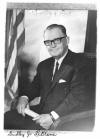 |
Sen. Dudley J. LeBlanc.
Another shot of Senator Dudley J. LeBlanc. |
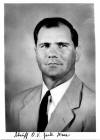 |
Sheriff O. V. "Jack" Moss.
Jack Moss served as Vermilion Parish Sheriff from 1956 to 1964.
Besides being sheriff, Jack was a rancher, teacher, boy scout chairman, and
served on the school board from 1952 to 1956. |
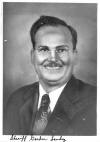 |
Sheriff Gordon Sandoz.
Sandoz was Vermilion Parish Sheriff from 1936 to 1940. |

